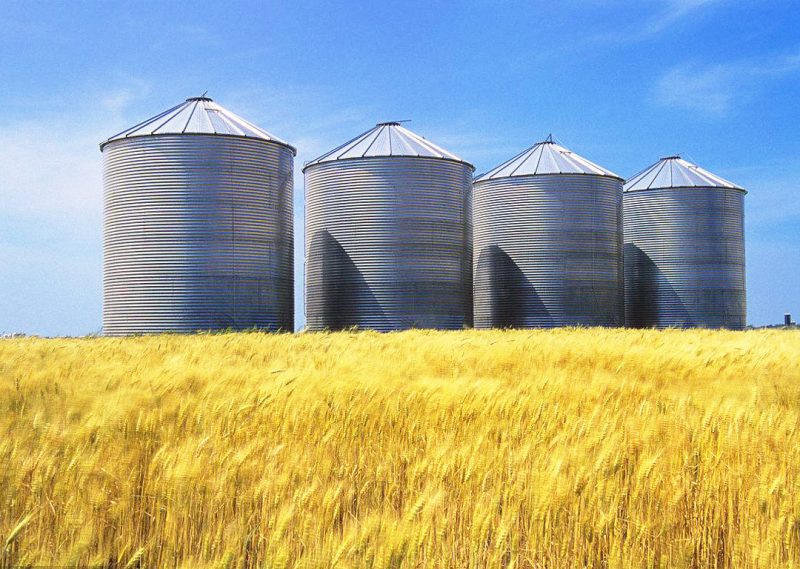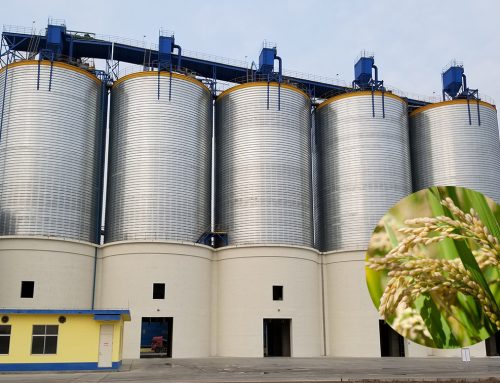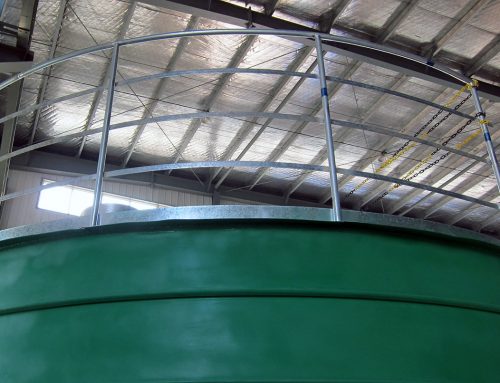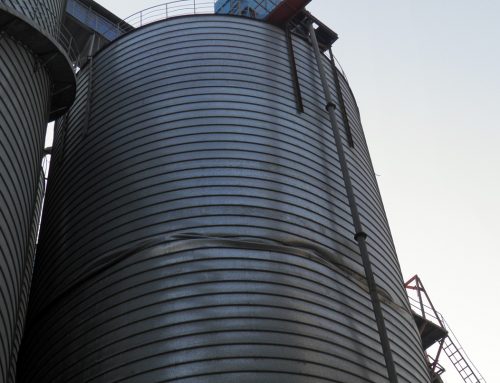There are three types of storage facilities commonly used by grain companies: brick warehouses, spiral steel silos and reinforced concrete silos. Except for some small-scale factories that use brick warehouses, large and medium-sized factories both prefer the latter two types of storage facilities.
Steel silos were first widely used in Europe and America. The steel silo for grain storage originated in the early 20th century. By the end of the 1970s, steel silos had virtually replaced any other type of granary. Especially in the United States, Canada, and other developed countries, steel silos have become the mainstream silo type of granaries.
Because of its many advantages, such as less investment, short construction period, and small floor space, the steel silo have become the preferred warehouse type for grain storage and have broad market prospects.
What are the advantages of using steel silos to store grain?
At present, grain companies mostly choose thin-walled steel silos for grain storage. In the early stage of the development of thin-walled steel silo, due to its thin wall (0.4-1mm), large temperature difference inside and outside the warehouse, condensation, and inadequate sealing, people are skeptical of its safety; People also have a big debate on the issues such as the service life of steel sheets.
In more than ten years of research, exploration, and practice, people have gradually realized its advantages, developed methods to solve the above problems, and admitted its application advantages in grain storage industry. These advantages will be briefly introduced below.
-
Ventilation technology
Vertical steel silo ventilation technology includes horizontal pipe ventilation, radial ventilation, and multi-function pipe ventilation. The commonly used ventilation forms are positive pressure ventilation and negative pressure ventilation.
Shallow-circle steel silo ventilation technology includes the geosynclinal ventilation technology. The duct layout is in the form of radial ducts and annular ducts.
-
Recirculation fumigation
Vertical steel silo circulation fumigation technology includes external circulation fumigation technology and internal circulation fumigation technology.
Shallow-circle steel silo recirculation fumigation technology includes fixed recirculation fumigation technology and mobile recirculation fumigation technology. The spraying method can be grain surface application method or off-site generator application method.
-
Electronic temperature measurement technology
The electronic temperature measurement technology is similar to the temperature measurement technology of the common warehouse, except that the temperature measurement point and the delamination point are slightly different. It is worth noting that due to the high grain line in the steel silo, the grain may damage the cable of the temperature detector when it is out of the warehouse, so be careful when the grain is out of the warehouse.
-
Cooling technology
Since the silo body of the steel silo is made of steel plate, the thermal conductivity of the silo body is very strong, and the food stored in the silo will be easily affected by the external environmental temperature. This will cause the food to experience relatively large temperature changes during storage.
At this time, we need to control the temperature in the steel silo so that the grain in the silo can be safely stored. In the hot summer, we can use the cooling machine to cool the interior of the steel silo to create a low-temperature environment, so as to achieve the purpose of safe grain storage.
In short, ventilation storage technology, recirculation fumigation technology, electronic temperature measurement technology, and cooling technology can ensure the performance of steel silos when storing food.
What do you need to pay attention to when food is stored?
Prompt inspection
The grain needs to be regularly inspected during storage. Especially in the summer, the frequency of inspection must be appropriately increased because of the high outdoor temperature and the high humidity in the air.
The inspection includes: Inspect the temperature of the stored grain through the temperature measurement system. Under certain circumstances, the storage condition of the grain needs to be inspected from the top of the warehouse. During the inspection, pay special attention to whether there is an abnormal phenomenon that the temperature inside the chamber rises within a short time. And it is also necessary to timely detect the moisture in the grain by sampling and other methods.
It is necessary to pay special attention to the fact that if the temperature measurement system is not installed in the steel silo, special personnel are required to manage the steel silo, so as to know the storage conditions of the materials in the storage.
When storing materials in steel silos, we should take some necessary precautions according to the nature and the storage time of materials. For example, the choice of ventilation and fumigation, applicable to transport material warehouse, ensure the storage of food safety. In addition, the top plate bin floor leakage is usually the cause of grain damp moldy parts. Therefore, we must carry out leakproof and moisture-proof treatment for granary.
Proper operation and regular maintenance
If a equipment is simply used without maintenance, its service life will be certainly shortened, no matter how great quality it was. The same is true for steel silos. Therefore, it is very necessary for the users to do a good job of daily maintenance of steel silos and strictly follow the correct operation methods.Good maintenance and proper operation can effectively improve the performance of the steel silo and extend its useful life.
Because there may be a large number of bacteria and harmful dust in the steel silo, workers cannot enter the steel silo without permission, especially when they are alone. But it is necessary for workers to enter the silo when they need to repair or inspect it. Then the ventilation and air exchange should be performed in the silo first, and workers must fasten their safety belts and ready protective measures before entering. When the steel silo is loaded with material, the open flame must be forbidden from showing.
The steel silo with food fumigation must be sealed before fumigation, all ventilation holes must be closed, and the operation must be strictly in accordance with the relevant regulations on fumigation.
Conclusion
The practice has proved that as long as proper operation and maintenance measures are taken, the steel silo can store grain for a long time, and its safe storage period can reach 3 years. For rice and corn, they can be safely stored in a steel silo for at least 1 year. If the steel silo is insulated and the facilities are completed, the storage time could be longer.




